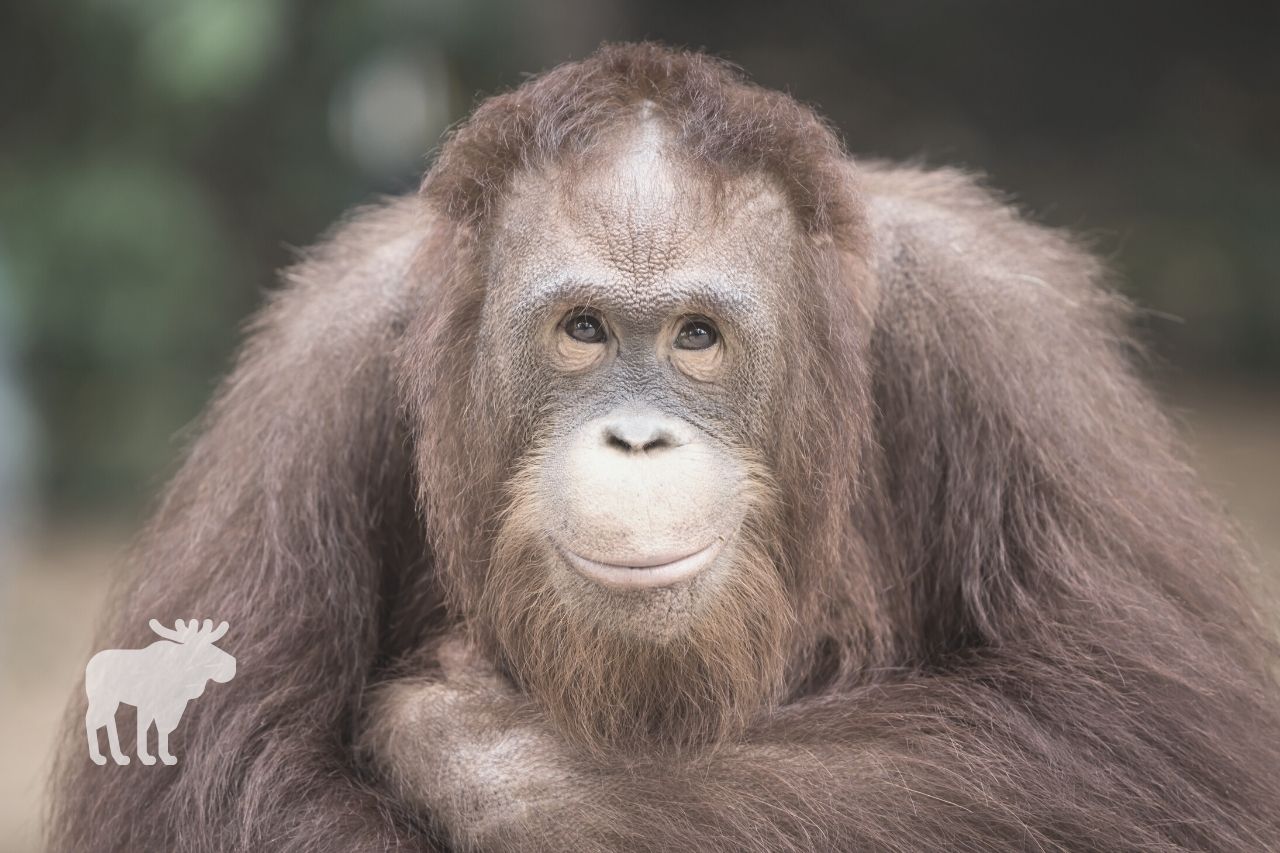Scientists tend to group animals together based on shared characteristics between them. Other people often do the same, though the grouping may be far less scientific in nature. In this article, we’ll talk about animals with long arms; and as you will see, some of them have nothing else in common aside from the length of their arms.
What You'll Learn Today
Animals With Long Arms
1. Sloths

Sloths are native to the rainforests of Central and South America, where they spend most of their lives hanging from the branches of trees. Their long arms are perfectly suited to this behavior.
A sloth’s arms are nearly as long as the rest of its body. They are composed of incredibly strong bones, muscles, tendons and ligaments that help the sloth swing from branch to branch, hang upside down for hours on end, and even go swimming.
Despite having arms that help them maneuver around, they move at an incredibly slow pace. This is because their metabolism is extremely low, so they have to save as much energy as possible.
To see a sloth’s long arms in action, check out this video:
2. Gibbons
Gibbons are monkey-like apes found in parts of Asia. There are about 18 species of them, all of which have long arms.
In fact, a gibbon’s arms are about one and a half times the length of its legs. Unlike the sloth, gibbons use their long arms to move very quickly–they can swing themselves through the trees at speeds of up to 34 miles per hour.
3. Monkeys
There are many species of monkey found in different parts of the world. Many of them are known for having long arms.
Monkeys live in trees, so their arms help them maneuver from branch to branch in a quick, efficient manner.
Spider monkeys, in particular, have exceptionally long limbs. Both their arms and their legs are much longer than the limbs of other monkeys.
4. Orangutans

Orangutans are native to parts of Asia. Their long arms have many functions in their day-to-day lives.
For one thing, they use them for hanging and moving through trees. But they also use them to get around on the ground, balling their fists and walking on all fours.
Their arms are longer than their legs, so they sometimes use their feet to feed themselves while hanging by their arms from tree branches.
5. Gorillas

Gorillas are found in parts of Africa. Like orangutans, they have arms that are longer than their legs.
Unlike orangutans, however, gorillas spend the majority of their time on the ground. They get around almost exclusively by balling up their fists and walking (or running) on all fours.
Due to the length of their arms, it’s possible that gorillas once spent more time in trees than they do now. These days, they seem to prefer staying on the ground.
6. Lemurs

Lemurs are interesting mammals found only on Madagascar and a few surrounding islands. There are over 100 species of them, and they all have long arms.
They spend a lot of time swinging from tree branches, though they also go down to ground level often. When they are on the ground, they usually walk around on all fours.
Lemurs’ arms are covered in scent glands, which allows them to “leave their mark” wherever they go.
7. Octopuses

Octopuses fill many of the oceans throughout the world, and they are known for having long arms (or tentacles). In fact, their tentacles seem to make up the majority of their bodies.
As their name suggests, octopuses have eight long tentacles, each one lined with suction cups on the underside. They use two of these arms to capture and hold onto prey, while the other six propel them through the water.
8. Squid
Similar in appearance to octopuses, squid have ten arms instead of eight. They are also found widespread throughout the world’s oceans.
Squid use some of their arms to capture prey and other ones to hold onto it once they’ve caught it. Their long arms also help them move fluidly through the water.
A squid’s arms will regenerate if they are damaged or cut off.
9. Crabs
You may not think of crabs as having particularly long legs, but there are some species that do.
The Yeti crab, in particular, was discovered in the Pacific Ocean in 2006. It is one of the most bizarre looking crabs out there.
The Yeti crab’s long, hairy arms are almost longer than its body, and it uses the pincers on these long arms to grab prey in the ocean. The hairs on its arms also help it remove toxins from its body and protect it from toxins in the water.
10. Bats

When you think of bats, you probably think of their wings. But remember, a bat’s arms are actually attached to its wings; or, more accurately, its wings are membranes of skin attached to its long arms.
There are hundreds if not thousands of bat species throughout the world, and all of them have long, flight-adapted arms. Many of them have arms as long or longer than the length of their bodies.
When they are not flying, bats curl their arms and wings around their bodies and often hang upside down to sleep.
Conclusion
There are many animals in the world that have long arms. Some of them, like monkeys and sloths, use their arms to move through trees. Others, like the octopus, use them for swimming. Still others, namely the bat, use their specially-adapted long arms for flying.